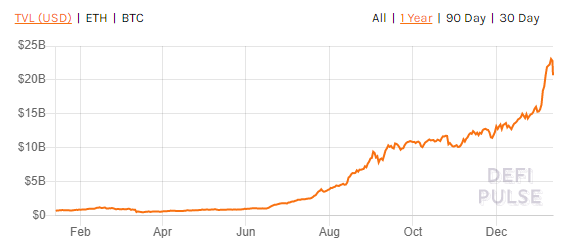Yield farming generally refers to the provision of liquidity for various protocols. These protocols pay out money (mostly in the form of governance tokens) to Liquidity Providers (LPs) as a reward, which is also where the term yield farming comes from.
As a subcategory of Decentralized Finance (DeFi), Yield Farming experienced a surge during the summer of 2020. Typically, it takes place on the Ethereum blockchain, as that is where the most liquidity is available. Yield Farming only became possible with an established decentralized infrastructure. This is because decentralized financial instruments such as lending protocols or decentralized exchanges (DEXes) need liquidity to function properly.
Yield farming also involves risks
This liquidity is usually aggregated in so-called "Liquidity Pools". The funds from the pools are then lent to borrowers or, in the case of DEXs, used to trade assets. As a reward, liquidity providers get governance tokens proportional to their share of the pool. The first project to use Yield Farming on a large scale was Compound (COMP).

Although yield farming offers the potential for attractive returns, it is not without risks. Vulnerabilities in smart contracts, permanent loss in liquidity pools and market volatility can affect overall profitability. Participants must carefully evaluate the risk-reward profile of each farming opportunity and consider factors such as platform security, tokenomics and project fundamentals. Rewards, on the other hand, may include not only the platform's native tokens, but also governance tokens that grant voting rights in decision-making on the protocol.









